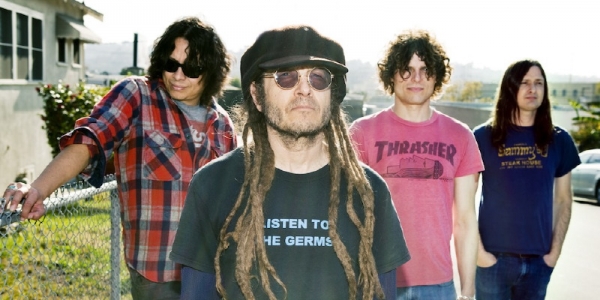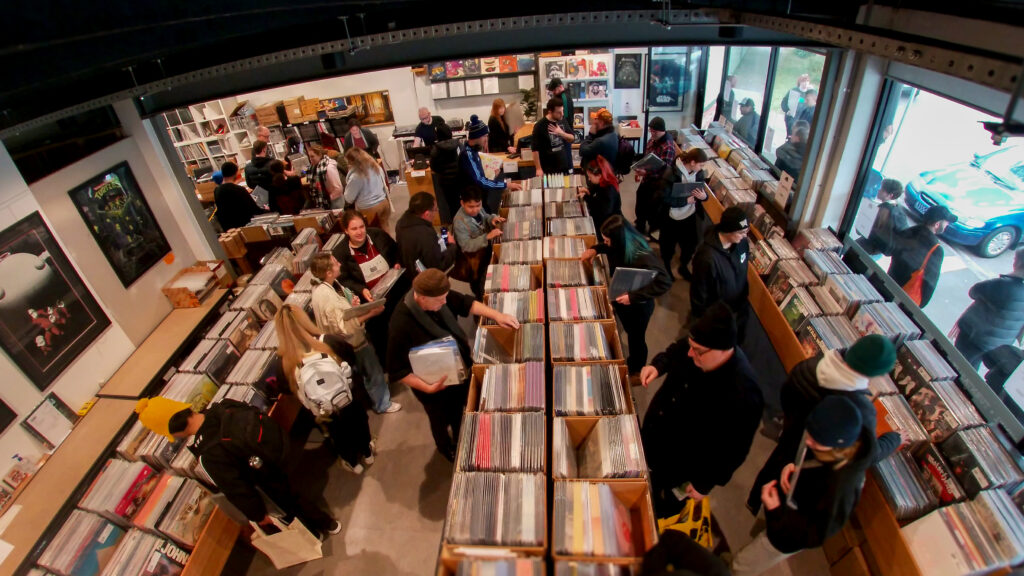A collaboration with New York’s Museum of Modern Art (MoMA), Swanlights is set to be one of the most spectacular music events of the year. A transcendent piece of multi-sensory artwork, Swanlights celebrates Antony’s captivating voice and work as an artist, backed by a 44-piece orchestra alongside the majestic and ethereal lighting and set design of Chris Levine and Carl Robertshaw. “I wanted to stage a concert in a less pedestrian way than I had in the past, where you really attend to the space between the songs and develop a sense of continuity,” notes the softly-spoken Antony. “The idea was to try and create a feeling of a concert that was set inside the centre of a mountain or a crystal cave. That was the basis and seed of the idea that evolved into Swanlights. I invited several amazing stage artists and designers to collaborate with me. It’s a series of curtains, sculptures and crystals which evoke this stunning sense of geometry.
“It’s very clean. It’s quite analogue in a way. There’s no digital technology per se. It’s laser light and music with a symphonic orchestration. However, the symphony isn’t revealed until very late in the concert. For the most part it’s just me on stage in these different light environments. The songs [that are performed] in the piece are collected from all of my records. There are themes and threads that connect all of work, and obviously one of them is the desire to reconnect with the natural world and to reaffirm the natural world spiritually as a source of my own life and my own consciousness. There’s almost an indigenous sense to return of the earth as my primary parent in a way.”
Originally intended to be a once-off piece, never to be seen again, Antony recounts the performance held earlier this year. “We performed at the Radio City Hall which is a gigantic theatre in New York City. It’s almost like an airplane hangar, it’s a very beautiful and round space. It held an audience of 6,000 people, the scale of it was not like anything I had ever done before. Because of the lights and the lasers, the piece is meant to be seen from quite far away. There are people who are used to coming to my concerts and really focusing on my facial expressions, but [in this piece] I’m really devoured by the movements of light. It’s quite formal in some ways.
“At its heart, [Swanlights] is a concert of my songs with a lot of attention paid to the sense space inside the room and between the performer and the audience,” she details carefully. “I’m trying to turn the space inside out as it were, trying to see inside the photons, trying to see the metaphysical space.”
Alongside Swanlights, Melbourne Festival will also be presenting two screenings of TURNING, Antony’s collaborative film with director and dance filmmaker Charles Atlas. “The film is actually a document of another major staging. It’s a concert that I staged in collaboration with Charles in 2006 in a few cities in Europe. Originally I had developed the piece TURNING with Charles before the Whitney Biennial in 2004 in New York and we performed it on a very small scale. But after I won the Mercury Prize [in 2005, for his sophomore album I Am A Bird Now] everything sort of blew up for me, so I took the opportunity to take the whole cast with me on tour to about six or seven cities in Europe.”
A culmination of documentary, concert film and visual artwork, TURNING harnesses the soaring work of Antony alongside Atlas’ sublime visual transformations and the stories of 13 women. “The cast comprised of 13 unusual women from New York who I felt were really beautiful and inspiring,” explains Antony. “For each song that I sang with my chamber group a different model would stand on the side of the stage on a turning platform and Charles would generate video portraits of that model live that would then be projected onto a giant screen behind the concert. 13 models for 13 songs. The reason I chose all female models, whether biologically female or transgender was the theme of everything moving towards the feminine. In some ways it does parallel the themes of Swanlights, this idea of a redemptive movement towards the feminine and also a futuristic vision of femininity and what the future might look like. A lot of the models in the piece are very frontier artists who have been a tremendous inspiration to me.
“For each song there was a live video portrait of a different woman’s’ face slowly turning behind me. The other models would then sit in a row in front of the orchestra. There was a sense that we were a circle and that we were performing for ourselves. It was really powerful, and there was an alchemy to it that was really exciting. When we brought it on the road to Europe we had such a spectacular time and we decided to document it and this film is sort of the result, not just of the documentation but of Charles working with the portraits. It’s sort of a combination of an art film and a documentary of a series of performances. It’s an investigation into the personalities of the people who were a part of the cast. In the original concert, of course, you didn’t hear from any of the models who were a part of the show. But in this film we really did very intimate interviews with them and a lot of other themes and elements begin to emerge. The film is really another phase of the piece. I wouldn’t say it’s just a document of what had transpired.”
Throughout the festival there will also be an exhibition of Antony’s visual artworks. Entitled Paradise, the works are a diverse collection of drawing, collage and sculpture which further explore the themes so evident within his music. “For the album Swanlights I also released a book of about 60 drawings,” she says. “This was the first time that I delivered a body of my visual work outside of my record covers. Since then I’ve been involved in a few shows in different parts of the world. I had a show earlier this year in the Hammer Museum in Los Angeles, which was really the first time that I’ve shown my work by itself, as I’ve always been in group shows. It was really exciting for me, and I’m really thrilled to be able to bring a version of that to Melbourne. These are drawings that I’ve completed over the last six or seven years. The images are very process orientated, they’re very wrapped up in the sense of erosion and slow development.”
Pausing to reflect, Antony provides a final insight to the bodies of work that will be explored within the festival, and the ethos she holds towards the contemporary cultural world. “There’s this sense of a dark line throughout as we’re currently in this time of crisis. We’re facing quite an apocalyptic period in the history of the natural world. We’re so quickly eradicating so many species and so much biodiversity. I mean, we’re anticipating a catastrophic rise in the temperature in the next 50 years. A lot of the work revolves around my long-attending ruminations on that as a member of our species. The idea of being able to move through it and dreaming of future scenarios but also acknowledging reality. Not just being statistically aware of it, but to be awake. Creatively awake, elementally awake, spiritually awake and biologically awake.”
BY TYSON WRAY







